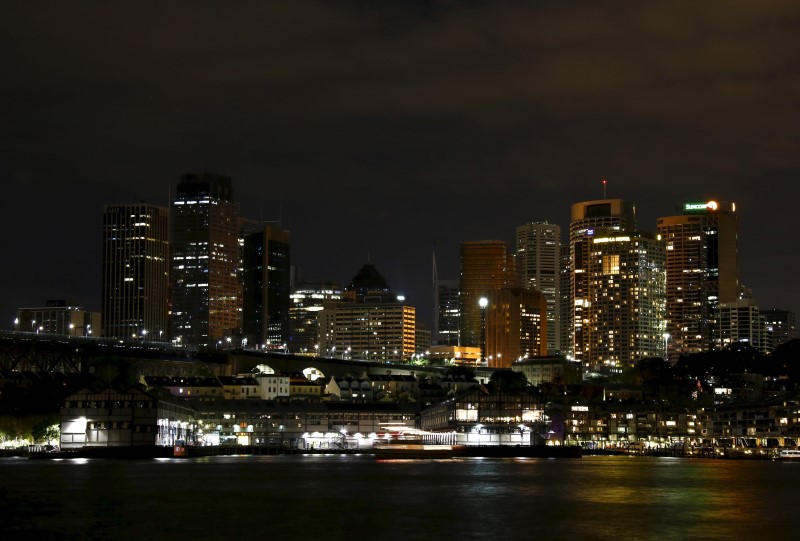* GDP rises 1.1 pct in Q1, 3.1 pct on year
* Annual growth fastest since Q3 2012
* Australian dollar rallies, markets trim rate cut risk (Updates with details)
By Ian Chua
SYDNEY, June 1 (Reuters) - Australia's economic growth boomed past expectations in the first quarter with the annual pace speeding to its fastest in over three years, an upbeat result that all but assures the central bank will be on hold at its policy meeting next week.
The official data on Wednesday showed gross domestic product (GDP) grew 1.1 percent in the three months to March, accelerating from an upwardly revised 0.7 percent and well above the median forecast of 0.8 percent.
That pushed the annual growth rate to 3.1 percent - a pace not seen since late 2012 - from a downwardly revised 2.9 percent, keeping the economy well on track to meet the Reserve Bank of Australia's (RBA) forecast of 2.5-3.5 percent by June.
While the growth - driven by exports of iron ore, coal and liquefied natural gas - is good news for policymakers, questions about the sustainability of strong trade cloud the growth outlook for the rest of the year.
"The gloomsters will say the data is wrong. But it is hard to argue with a mountain of evidence," said Craig James, chief economist at CommSec.
"What is happening is what is supposed to be happening - mining construction gave us extra production capacity, now that extra capacity is being put to work."
The Australian dollar AUD=D4 shot up nearly half a U.S. cent as investors trimmed the risk of another cut in rates this year. The market is giving less than a 50-50 chance of an easing by August and is no longer fully priced for an easing this year.
EXPORT BOOM
Shane Oliver, chief economist, AMP Capital Investors, said
all of the growth came from trade as the third phase of the mining boom kicks in as projects start exporting.
"We have had the mining investment boom that's come to an end. Now we are seeing the boom in mining and resource-related exports, that's what is driving this growth."
That leaves Australia's future growth potential at the mercy of offshore demand, particularly that of China, its single biggest export market.
Australia's shipments of iron ore - the country's top export earner - to China remained surprisingly robust in the first four months of the year, defying fears of a collapse in demand.
Iron ore exports from Australia's Port Hedland - the world's largest iron ore terminal and used by mining giant BHP Billiton (LON:BLT) BHP.AX - have been about 30 million tonnes per month on average this year, little changed from the 2015 monthly average.
"Even mining companies don't expect resources exports to continue to rise at their current pace," Paul Dales, chief Australia & NZ economist at Capital Economics, wrote in a research note.
While China's manufacturing sector expanded for the third straight month in May, factory orders have softened, suggesting the world's second-largest economy is struggling to regain traction. now though, the GDP data means the RBA can focus on how inflation develops before deciding on its next move.
Last month, the RBA reduced its cash rate to a record low 1.75 percent last month due to alarmingly low inflation even though it maintained its growth forecasts.
The RBA next meets on June 7.
Australia hasn't seen a recession in around 25 years and its run of growth is the envy of other rich nations including the United States, which last week reported annualised growth of 0.8 percent in the first quarter. improving economic background should also provide a political boost to the coalition government of Malcolm Turnbull, who faces a national election next month.
